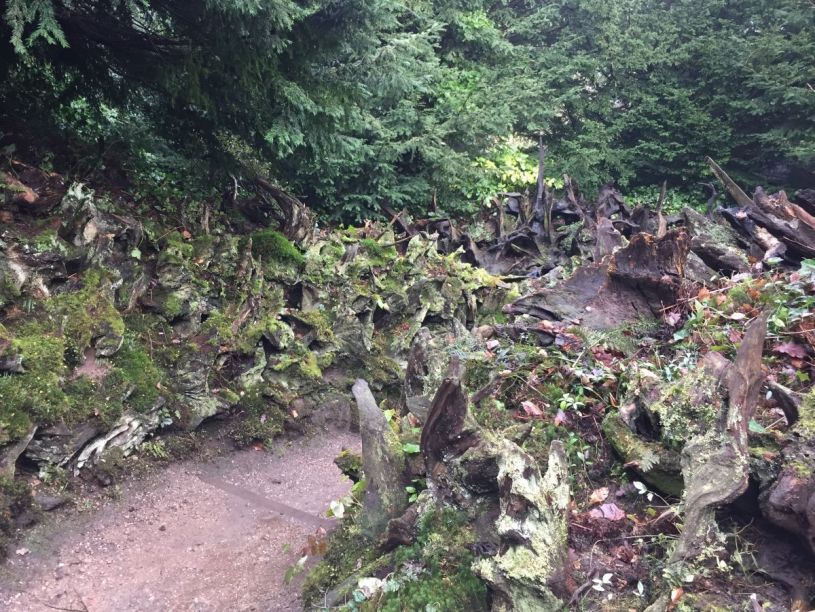One of the pleasures of garden terminology is the extensive and creative use of standard suffixes for pretty much any circumstance that can be imagined, such as ‘-etum’, for gardens focusing on a specific plant type (e.g. arboretum, pinetum, rosetum), and ‘-ery’. The latter is used in the well-known rockery and shrubbery, but also in the less common ‘stumpery’, the focus of this post.
The Origins of the Stumpery
The stumpery has been defined as ‘a feature composed of tree roots and stumps placed upside down into earth banks, with trailing plants festooned about them’ (A Glossary of Garden History, Symes, 2006). The careful location of the stumps, and their use as a home for plants, results in a form that is not dissimilar to a rockery, though the palette of plants used tends to be a little more limited (with ferns being particularly common).
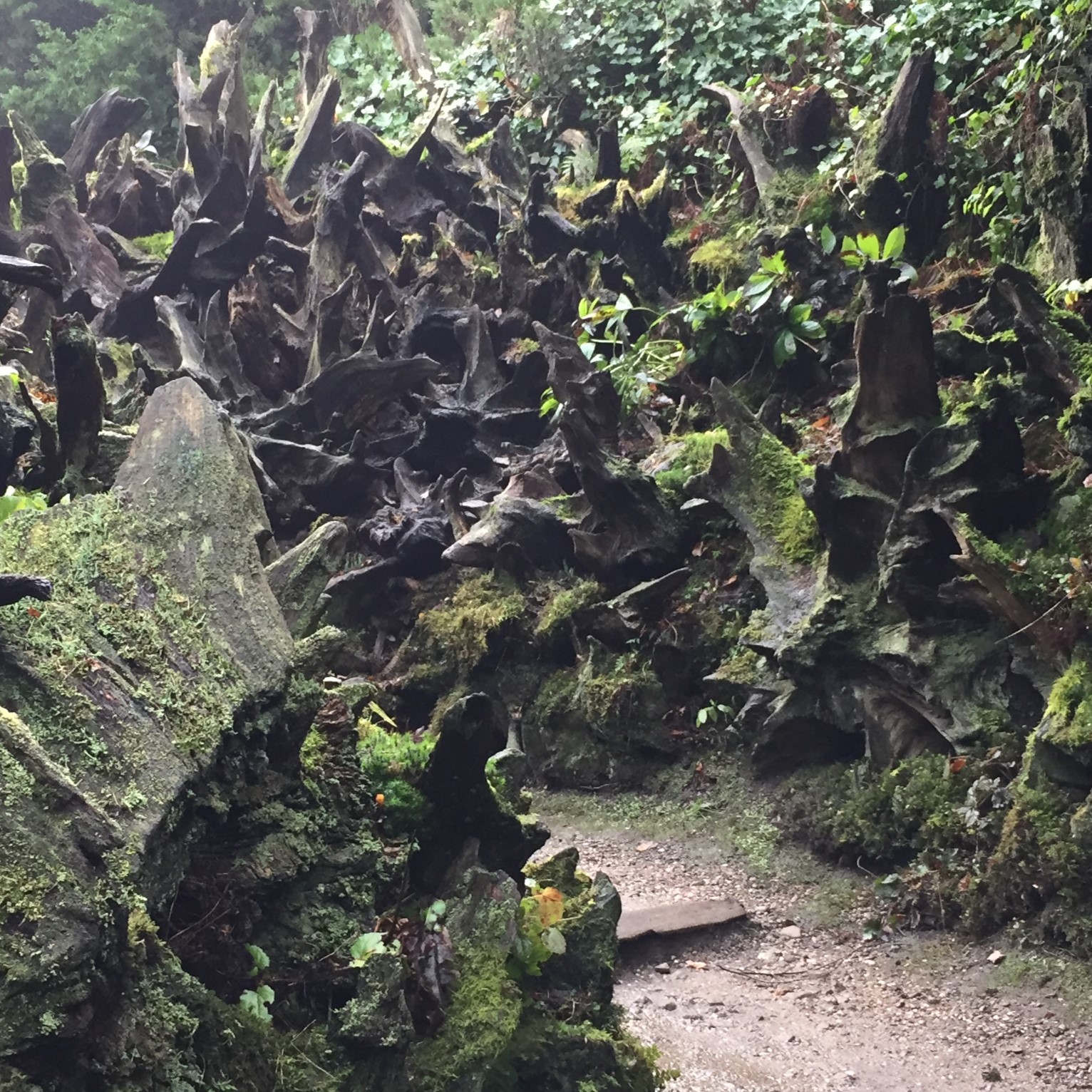
In a Royal Botanic Garden Edinburgh blog post, Rebecca Cross suggests that the origins of stumperies could be traced to the eighteenth-century Picturesque movement:
The Picturesque [was defined] as a quality between the ‘sublime’ and the ‘beautiful’. These terms were often visualised in landscapes and gardens by using irregular compositions of jagged rocks and stumps to make rustic structures, e.g., rockeries and ‘rooteries’.
Rooteries are ‘considered a predecessor to the stumperies of the Victorian era’, with ‘one of the earliest references to stumps and roots being used as a garden feature’ being in mid-nineteenth century The Ladies’ Companion to the Flower-Garden, by Jane Loudon. She describes ‘root-work’ as follows:
The roots of trees, and especially large roots including the stool or base of the tree after the trunk has been cut down to the ground, may be combined together in various ways, useful, ornamental, or curious, in gardening. Two or three large stools of trees grouped together on a lawn, with mould and plants placed in their interstices, form a striking contrast to the smoothness and high art displayed on the general surface of the lawn. The plants placed among the roots, whether in pots concealed by mosses, stones, or mould, or planted in soil, should never be of indigenous kinds common in the locality; for these might be mistaken for weeds; but of exotic kinds…. The idea to be kept in view is, that of creating artificial ornaments without much expense; and, therefore, the roots must never appear to have been left where they are, by carelessness or accident, but placed by design, and with reference to the composition of which they form a part.
An early stumpery (often regarded as the first) was created in 1856 at Biddulph Grange, in Staffordshire, one of ‘a number of picturesque settings which would provide the variety of conditions… to grow a wide range of plants’ (Mavis Batey and David Lambert, The English Garden Tour: A View Into the Past, 1990). Designed by Edward Cooke for the estate’s owners, the Batemans, it was described in an article in The Gardeners’ Chronicle (December 6, 1856) as ‘a very well-arranged and characteristic root-garden’:
The root-garden, or, as it is here called, for want of a better term, “the Stumpery,” consists of a very picturesque assemblage of old roots or rugged stems and stumps of trees – chiefly the latter – piled to the height of 8 or 10 feet on either side of a winding and rapidly descending walk. They are so irregularly arranged as to jut forward in the boldest prominence, and even to be united into a rustic arch in some parts; while in others they recede far enough to allow room at their base for little gatherings of choice herbaceous plants, bulbs, or miniature shrubs.
Mr. Bateman has been singularly fortunate in procuring a quantity of the most gnarled, contorted, and varied masses of wood imaginable for this purpose; and they are joined together and disposed with consummate art. The blocks being all of Oak, too, they are likely to be very durable. Over considerable portions of the whole, masses of Ivy, Virginian Creeper, Cotoneaster, and other trailing plants scramble about in the wildest manner. And the interstices, as well as the open spaces now and then occurring at the base, are all used for the reception of some characteristic and interesting plant or group.
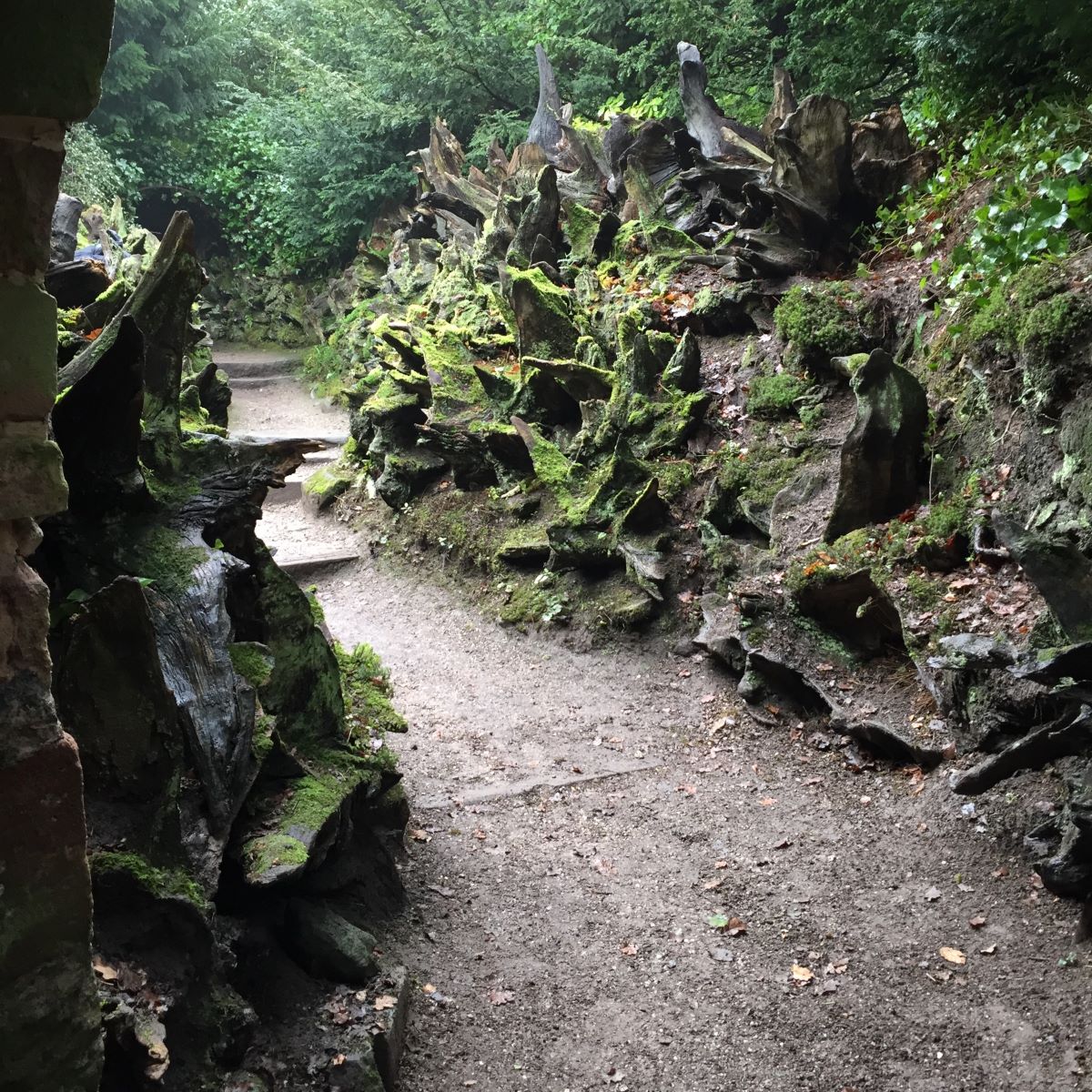

Biddulph Grange changed hands several times after the Batemans passed it to their son in 1868, but the grounds remained well maintained. The house was rebuilt after a fire in the 1890s, becoming a hospital between the 1920s and 1980s. The National Trust acquired it in 1988, undertaking much-needed restoration after a lengthy period of neglect. Batey and Lambert describe Biddulph Grange as ‘one of the few [Victorian gardens for] which it has been possible to attempt a restoration in the spirit and character of the original’.
The grounds are now registered at Grade I. The Register entry notes that Biddulph Grange is ‘a world image garden, in which plants from other countries are evoked amid an extraordinary collection of garden buildings and microclimates’: the Stumpery lies between ‘Egypt’ and ‘China’.
Other Stumperies
The Biddulph Grange stumpery inspired others, not least due to the suitability of the form as a means of indulging the nineteenth-century interest in ferns (culminating in pteridomania), and (re)creating a woodland environment. One such is at the Grade II* Arley Hall, ‘C18 and later gardens and pleasure grounds including what may be England’s earliest herbaceous border’. The Rootery was created in 1857-8 as a fernery. As described in the Register entry:
It comprises a shallow quarry-like rock garden with pool and, on its north side, a domed brick shelter with stump work surviving on one side of its doorway. The Rootery bears some resemblance to the Stumpery at Biddulph Grange….
A further stumpery was created by Edward Cooke in his own garden at Glen Andred, in East Sussex, between 1866 and 1880.

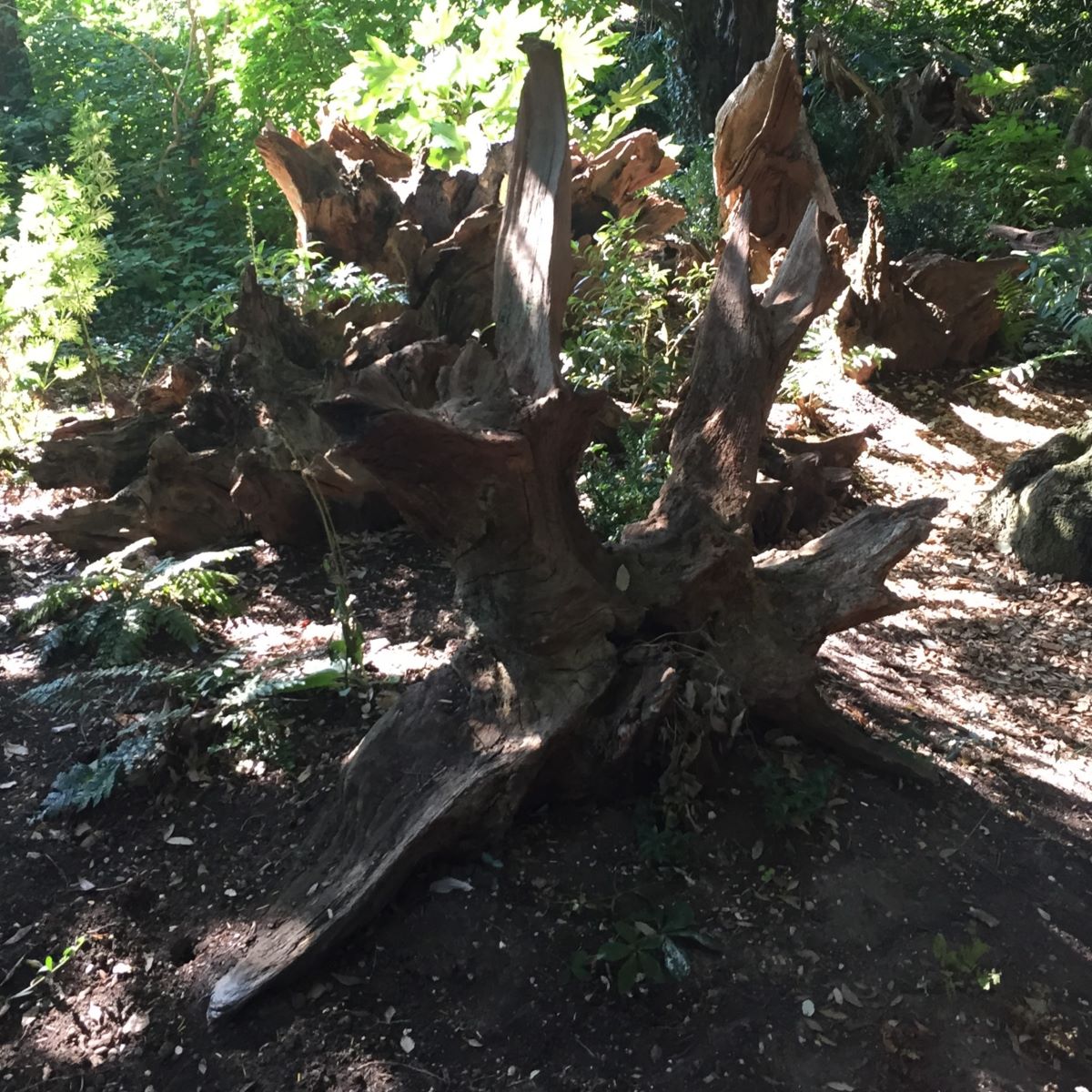
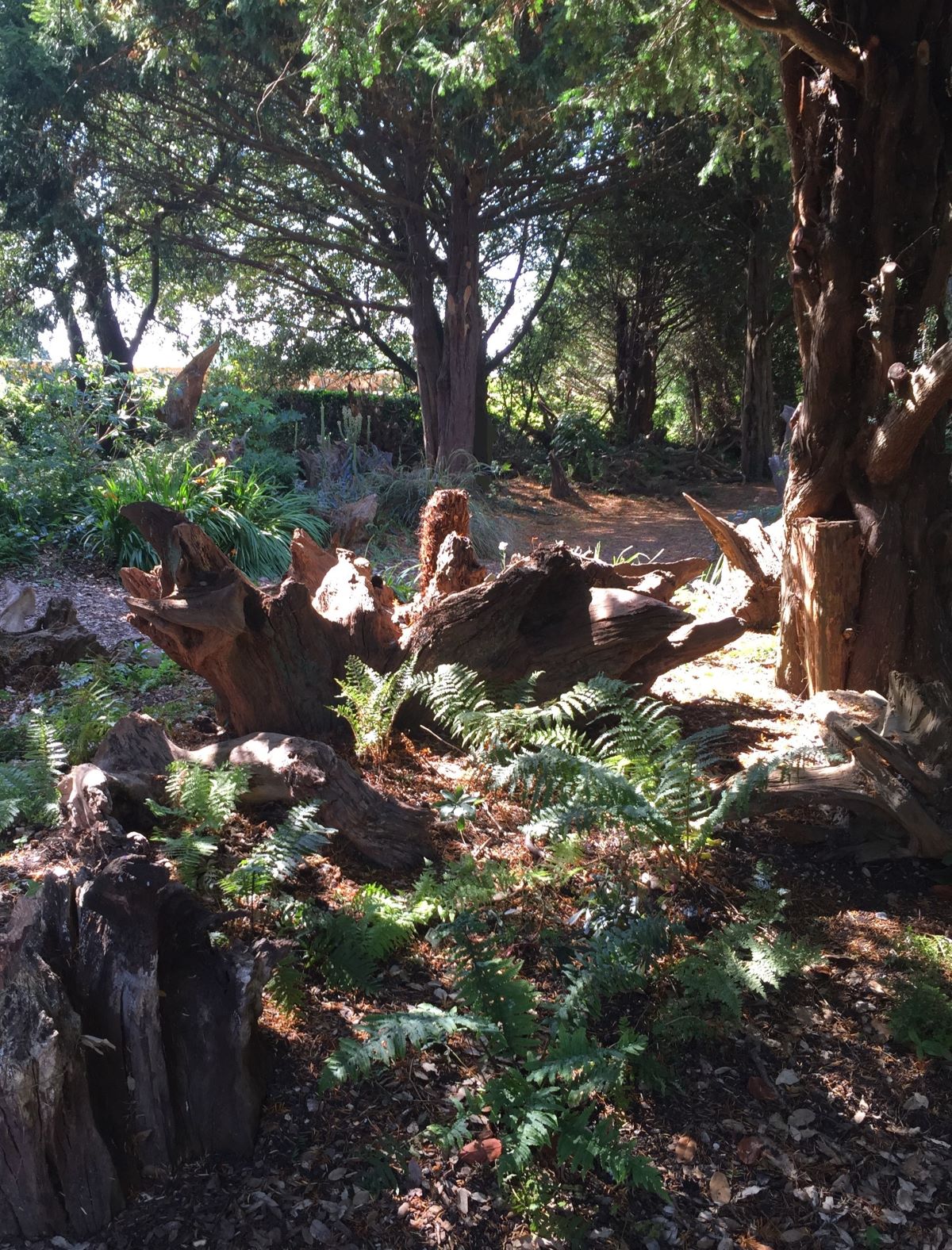
A number of stumperies are more modern, though. One has been created by the National Trust at Ickworth, in Suffolk, using the stumps of trees uprooted in World War II (in support of the ‘Dig for Victory’ campaign) to create a Victorian effect. The largest modern stumpery in Engand is believed to be the one at Highgrove: ‘a tranquil, atmospheric garden that draws inspiration from the Victorian tradition of growing ferns among upturned tree stumps’ (sweet chestnuts, in this case). Located within open woodland, and originally intended for hostas, it also contains ferns, euphorbias and hellebores.
There are also stumperies at Woolbeding, Trebah (where a new stumpery was created in 2020), Burnby Hall (created in 2011 and inspired by Highgrove), and RHS Rosemoor. At Arundel, estate trees felled by the ‘Great Storm’ of 1987 provide the basis for the stumpery – a mix of oak, sweet chestnut and yew – and are now filled with a range of plants across a broad colour palette.
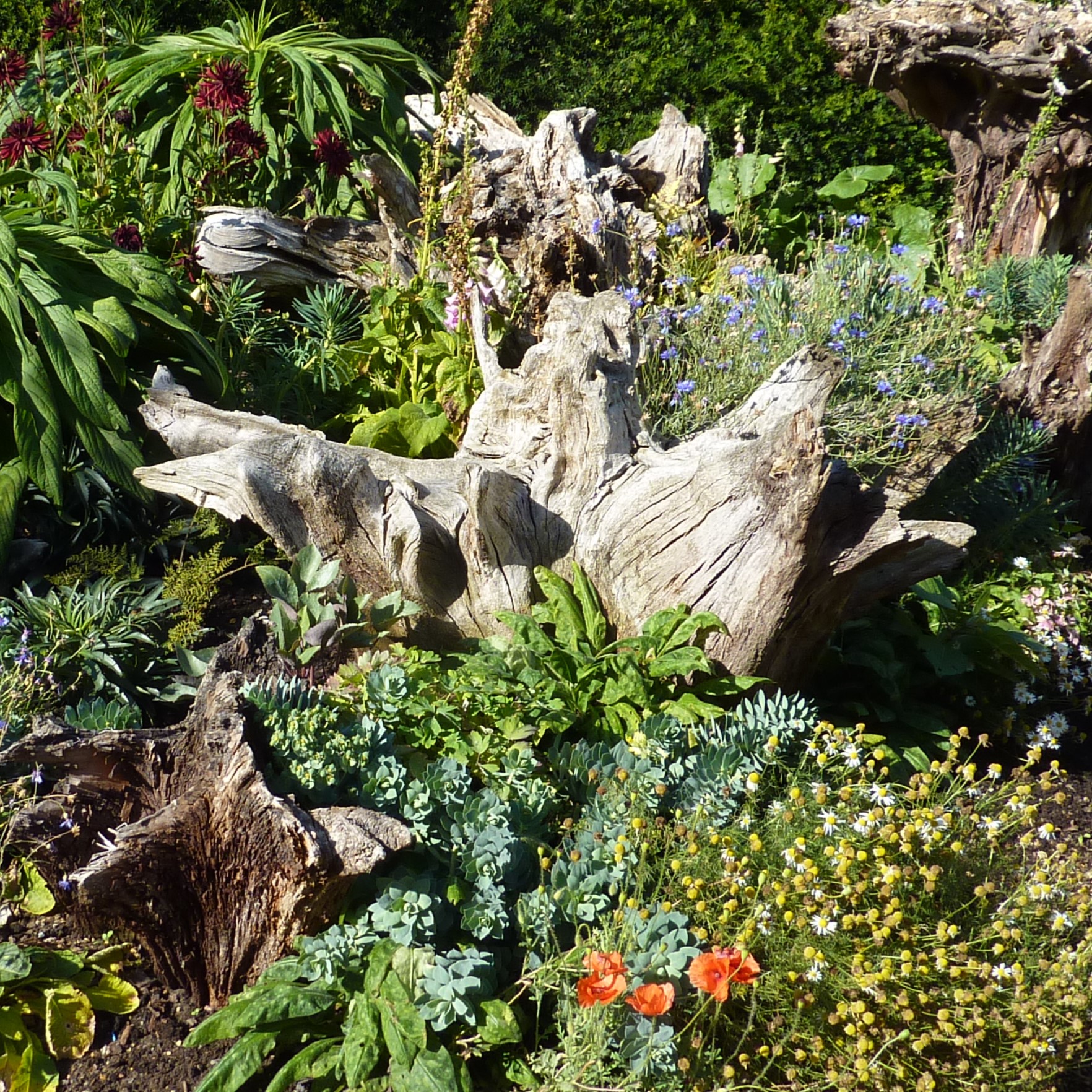
Another National Trust stumpery was created in 2016, within the Grade II gardens at Sizergh, in Cumbria – the first significant development within the gardens in almost a century, reclaiming an area previously overgrown with brambles. Along with other plants, the stumpery houses one of the site’s four national collections of hardy ferns (the others being in the rock garden and orchard). The often sizeable (Sizergh-able?) stumps used include beech, sycamore and ash, and came from the construction site for the Heysham to M6 Link Road. The pictures below illustrate the way in which stumps may become less apparent in the growth of spring and summer.

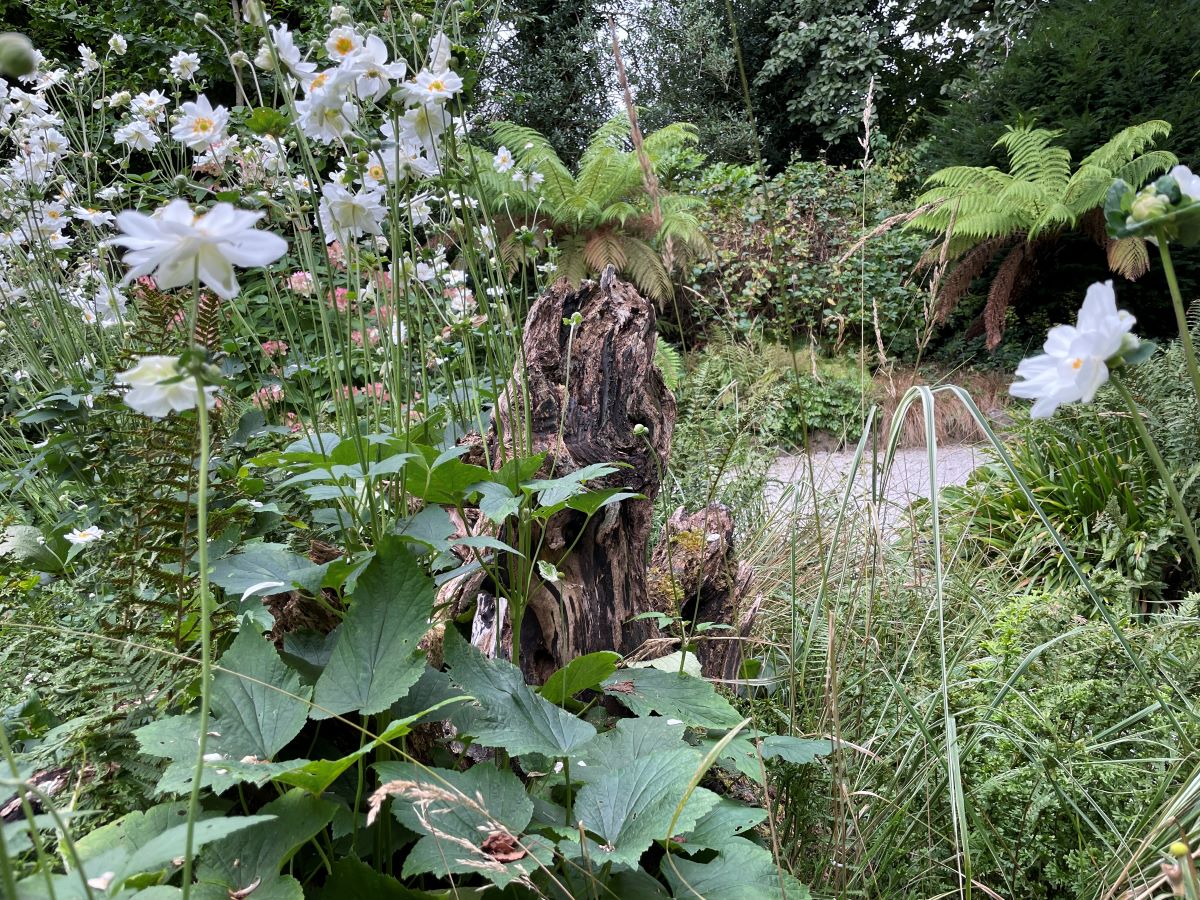
Reflections
The proliferation of modern stumperies is regarded by many as a revival of this quintessentially Victorian form, and it is easy to understand why: with roots exposed to the sky, they are more visually interesting than a rockery, and allow both efficient recycling of garden waste and the creation of rich wildlife habitats. But an interest in tree stumps need not be limited to stumperies. Jane Loudon provided a wealth of further suggestions for their use in the garden, which also warrant consideration:
Roots may also be combined together so as to form seats, open or covered huts, grotto-like structures, and grotesque bridges; and one object for which they are particularly suitable is for placing on the margin of pieces of artificial water along with trees, bushes or plants…. Roots may be piled up, and connected together by wooden pegs, so as to form arches, arcades, or covered ways, or grottoes, or other structures, for shelter or repose…. Roots also may be piled up so as to form grotesque fences, which are suitable for certain situations and purposes.

